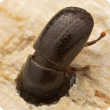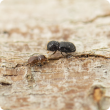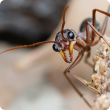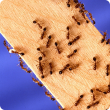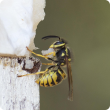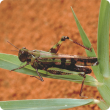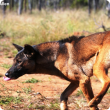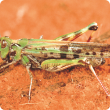Biosecurity & quarantine
The Department of Agriculture and Food, Western Australia (DAFWA) works with primary industries to safeguard our agricultural resources from biological threats and to maintain our export opportunities.
The State’s reputation is underpinned by a comprehensive biosecurity and quarantine system, developed and operated by DAFWA.
DAFWA is involved with:
- creation of surveillance and diagnostic programs
- animal and plant risk assessments
- importing and exporting requirements
- creating mechanisms to respond to incursions
- livestock movement and identification
- development and maintenance of biosecurity and quarantine legislation.
To find out more about what we do to protect agricultural production and export opportunities within the State please search our website.
Filter by search
Filter by topic
- Pests, weeds & diseases (21) Apply Pests, weeds & diseases filter
- (-) Remove Pests filter Pests
- Biosecurity (21) Apply Biosecurity filter
- (-) Remove Invasive species filter Invasive species
- Pest animals (12) Apply Pest animals filter
- Pest insects (9) Apply Pest insects filter
- Control methods (5) Apply Control methods filter
- Pest mammals (4) Apply Pest mammals filter
- Livestock & animals (4) Apply Livestock & animals filter
- Birds (4) Apply Birds filter
- Plant biosecurity (3) Apply Plant biosecurity filter
- Livestock management (3) Apply Livestock management filter
- Weeds (3) Apply Weeds filter
- Diseases (3) Apply Diseases filter
- Baits & poisons (3) Apply Baits & poisons filter
- Chemicals (3) Apply Chemicals filter
- Livestock biosecurity (2) Apply Livestock biosecurity filter
- Fungi (2) Apply Fungi filter
- Declared plants (2) Apply Declared plants filter
- 1080 (2) Apply 1080 filter
- Quarantine (1) Apply Quarantine filter
- Sheep (1) Apply Sheep filter
- State Barrier Fence (1) Apply State Barrier Fence filter
- Mechanical, physical and cultural (1) Apply Mechanical, physical and cultural filter
- Strychnine (1) Apply Strychnine filter
- Beef cattle (1) Apply Beef cattle filter
- Amphibians and reptiles (1) Apply Amphibians and reptiles filter
- Emergency response (1) Apply Emergency response filter
- European house borer (1) Apply European house borer filter
- Intrastate movement (1) Apply Intrastate movement filter
- Livestock species (1) Apply Livestock species filter


